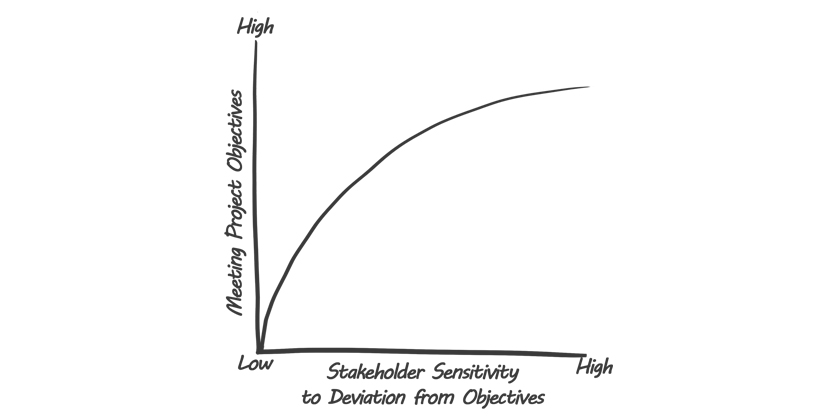The main stakeholder in any project is the client. The client is the one whose needs are the driving force behind the project and is likely to be the one who will derive the most benefit from the project upon its completion.
Differentiation must be made between the paying clients and the clients who are the ultimate end users of the project’s outcome. When estimating a project’s success or failure, the primary indicator is client value. If the end user client does not derive the expected value from the project deliverables, then the project has failed—even if the project has met all the objectives set out by the paying client.
It is of vital importance that the client be as involved in the project as possible in order to ensure that the projected value targets set out in the project parameters are met. It is equally important to involve any other stakeholders who may affect or be affected by the project and its outcomes. Therefore, it is essential to identify all the stakeholders who influence the project on the one hand, and the extent of their impact on the project on the other. Influential stakeholders need to be involved in the project in order to ensure that the decisions made in the project are the best decisions possible. An influential stakeholder not being sufficiently involved in the project might lead to bad decisions, which may ultimately lead to the failure of the entire project. The ’Involvement/Impact Matrix’ describes the project’s stakeholders and the way they should be managed.

Ideally, all project stakeholders should be situated such that there is a healthy correlation between their involvement in the project and the level of impact and influence they yield. Whenever a stakeholder strays from this position, he should be nudged back to this optimum point. Naturally, the project manager is highly involved in the project and should have an equally high impact on it. If the project manager is not given enough authority, it puts the entire project at risk due to the gap between the project manager’s responsibility to guide the project to a successful conclusion and the project manager’s lack of authority to do so. In such a scenario, the project manager must seriously consider whether to get involved in the project or not. If the project manager decides to accept the situation and its constraints, at the very least he should warn of the difficulties that might arise from sitting in a driver’s seat without a steering wheel.

All too often, the client is not sufficiently involved in the project, which leads to a significant gap compared to his impact on the project. In such a case, both formal and informal communication channels must be implemented to increase his involvement in the project. High client involvement and commitment to the project are two of the most common factors essential to the success of the project. An interesting fact: The rate of success in meeting the project’s objectives is strongly related to stakeholders’ tolerance of deviation from those self-same objectives. In other words, when stakeholders show real commitment to a project, its objectives are met at a significantly higher rate than on projects where no such commitment is manifest. The project’s benefits for each stakeholder should be defined right from the start. Since tangible benefits form the strongest motivational basis, it is useful to present these benefits explicitly to each stakeholder rather than rely on their finding out indirectly.


